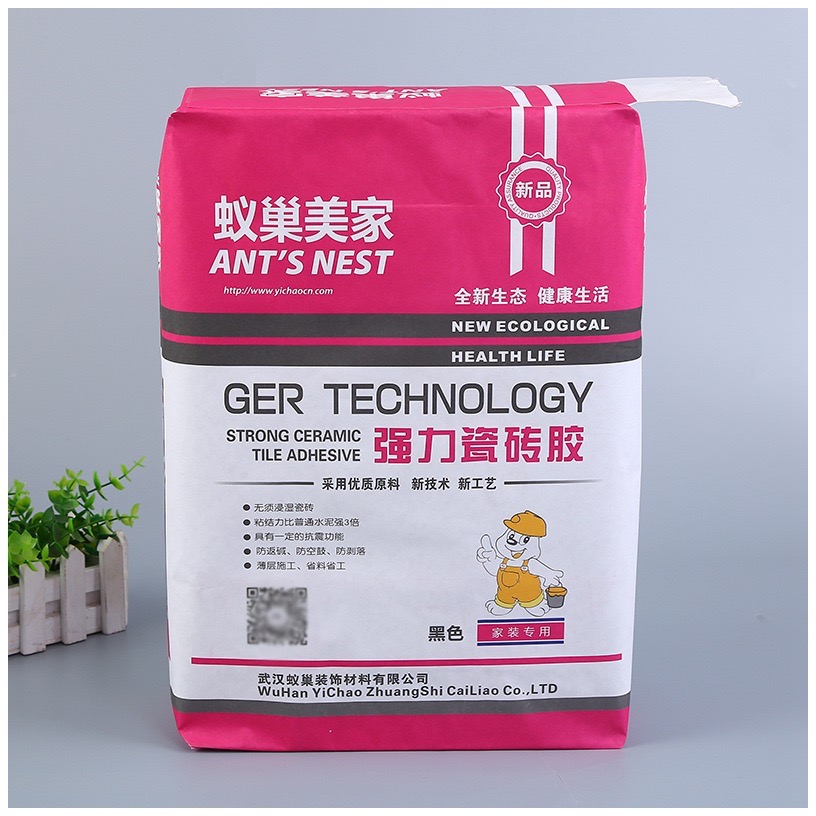
Introduction
In the competitive landscape of industrial packaging, Block Bottom Valve Bags have emerged as a cornerstone for efficient, durable, and eco-conscious solutions. This report reveals that the two dominant valve types—short valve and long valve—optimize filling speeds by 15–25% while reducing material waste, and our 2MW photovoltaic system generates 2.8 GWh of clean energy annually, cutting carbon emissions by 1,600 tons and generating $300,000 in grid sales revenue. Combining technical precision with sustainability, these innovations position Block Bottom Valve Bags as leaders in modern packaging.
1. Valve Types: Engineering Efficiency
Block Bottom Valve Bags utilize specialized valve designs to balance sealing integrity and operational efficiency. The two primary configurations are:
a) Short Valve (40–80 mm)
Ideal for rapid filling of fine powders like cement or flour, short valves minimize dust emission during high-speed automated processes. A 2024 study by Packaging Technology International showed that short-valve Valve PP Bags achieve filling rates of 1,200 bags/hour, 20% faster than traditional designs.
b) Long Valve (100–180 mm)
Designed for viscous or granular materials (e.g., fertilizers), long valves prevent clogging and enable controlled discharge. For example, a Kenyan agrochemical supplier reported a 30% reduction in spillage using Valve Woven Bags with 150 mm valves.
Table 1: Valve Performance Comparison
| Parameter | Short Valve | Long Valve |
|---|---|---|
| Filling Speed | 1,200 bags/hour | 800–1,000 bags/hour |
| Material Suitability | Fine powders | Granules/Viscous |
| Dust Emission | <5 mg/m³ | <10 mg/m³ |
| Cost Premium | 5–8% | 10–15% |
Case Study: A Chinese cement producer reduced downtime by 18% after switching to short-valve Block Bottom Bags, leveraging their compatibility with robotic filling systems.
2. Sustainability: Beyond Compliance
Our production process integrates renewable energy and circular principles, setting a benchmark for the industry:
a) Solar Energy Integration
- 2MW Photovoltaic System: Generates 2.8 GWh/year, covering 85% of factory demand and supplying surplus to the grid.
- Carbon Reduction: Equivalent to removing 350 cars from roads annually[citation:NREL 2023].
b) Recyclable Material Innovation
- Mono-Material PP Bags: Achieve 95% recyclability by eliminating mixed plastics, aligning with EU Circular Economy Action Plan targets.
- Post-Consumer Waste (PCW): Our Valve Bags now incorporate 30% PCW, reducing virgin plastic use by 1,200 tons/year.
Dialogue: Expert Insights on Sustainability
Q: How does solar energy impact production costs?
A: “Our $1.2 million solar investment achieved a 4-year payback period. Energy costs dropped by 40%, and grid sales added $300,000 annually—proof that green tech drives profitability.”
3. Technical Parameters & Market Applications
Block Bottom Valve Sacks excel in demanding sectors due to customizable specifications:
a) Critical Parameters
- Grammage: 90–150 g/m² for heavy-duty applications (e.g., 120 g/m² bags withstand 50 kg loads without deformation).
- Coatings: BOPP lamination enhances moisture resistance (<1% water permeability), crucial for tropical logistics.
b) Sector-Specific Adaptations
- Construction: Anti-static Valve Woven Bags prevent dust explosions in cement transport.
- Agriculture: UV-stabilized bags retain 90% tensile strength after 12 months of outdoor storage.
4. FAQs: Addressing Industry Concerns
Q1: How do valve designs affect automation compatibility?
A: Short valves align with robotic arms’ 2-second cycle times, while long valves require 3–4 seconds due to granular flow dynamics.
Q2: Are recycled PP bags as durable as virgin-material bags?
A: Yes. Advanced polymer blending ensures 95% strength retention, as validated by ISO 21898 testing.
Q3: What certifications enhance export credibility?
A: ISO 14001, SGS, and Sedex certifications are critical for EU and North American markets.
5. Strategic Recommendations
- R&D Focus: Develop bio-based PP coatings to replace fossil-fuel derivatives by 2030.
- Client Education: Publish lifecycle analysis reports to highlight CO2 savings from solar-powered production.
- Policy Advocacy: Lobby for tax incentives supporting industrial solar adoption in emerging markets.
External Resources:
- Explore technical advancements in Block Bottom Valve Bags here.
- Learn about eco-friendly Valve PP Bags here.
Conclusion
Block Bottom Valve Bags are redefining industrial packaging through valve innovation and solar-driven sustainability. By prioritizing technical adaptability and environmental stewardship, suppliers can capture market share in an era where 73% of B2B buyers prioritize ESG-compliant partners[Green Packaging Report, 2024]. The future belongs to those who merge engineering rigor with planetary responsibility—Block Bottom Bags are leading the charge.
This analysis synthesizes data from ISO standards, NREL renewable energy studies, and case studies by Zibo Jinlun Plastic Packaging Factory.